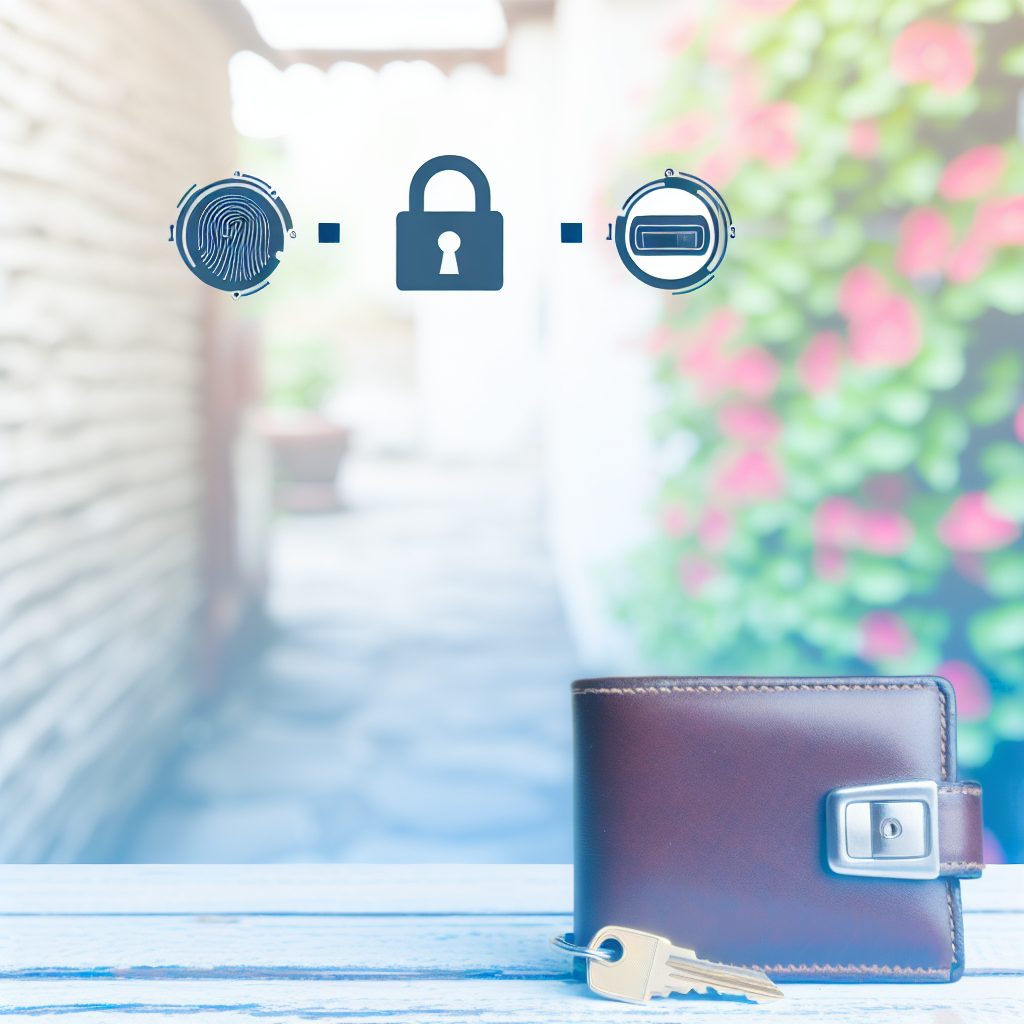Best Practices for Keeping Your Wallet Secure in the Cryptocurrency Industry
As the cryptocurrency market continues to grow, so does the importance of securing your digital assets. With the rise of cyber threats and hacking incidents, understanding how to protect your cryptocurrency wallet is crucial. This comprehensive guide will delve into the best practices for keeping your wallet secure, ensuring that your investments remain safe from potential threats.
Understanding Cryptocurrency Wallets
Before diving into security practices, it’s essential to understand what a cryptocurrency wallet is. A cryptocurrency wallet is a digital tool that allows users to store, send, and receive cryptocurrencies. Unlike traditional wallets, cryptocurrency wallets do not store physical coins but rather the private and public keys needed to access your digital assets.
There are several types of wallets, including:
- Hot Wallets: These are connected to the internet and are convenient for frequent transactions. However, they are more vulnerable to hacks.
- Cold Wallets: These are offline wallets, such as hardware wallets or paper wallets, providing enhanced security against online threats.
- Web Wallets: These are hosted by third-party services and can be accessed through a web browser. They offer convenience but come with security risks.
Best Practices for Wallet Security
1. Use Strong Passwords
Creating a strong password is your first line of defense. A robust password should be at least 12 characters long and include a mix of uppercase and lowercase letters, numbers, and special characters. Avoid using easily guessable information such as birthdays or common words.
2. Enable Two-Factor Authentication (2FA)
Two-factor authentication adds an extra layer of security by requiring a second form of verification in addition to your password. This could be a code sent to your mobile device or an authentication app. Always enable 2FA on your wallets and any associated accounts.
3. Keep Software Updated
Regularly updating your wallet software is crucial for security. Developers frequently release updates to patch vulnerabilities and improve security features. Ensure that you are using the latest version of your wallet software to protect against known threats.

4. Use Hardware Wallets for Long-Term Storage
If you plan to hold cryptocurrencies for an extended period, consider using a hardware wallet. These devices store your private keys offline, making them less susceptible to hacking attempts. Popular hardware wallets include Ledger Nano S, Trezor, and KeepKey.
5. Be Wary of Phishing Attacks
Phishing attacks are a common method used by cybercriminals to steal sensitive information. Always verify the authenticity of emails, messages, or websites before entering your credentials. Look for signs of phishing, such as misspellings or unusual URLs.
6. Backup Your Wallet
Regularly backing up your wallet ensures that you can recover your funds in case of device loss or failure. Most wallets provide an option to create a backup. Store your backup in a secure location, such as an encrypted USB drive or a secure cloud service.
7. Use a Secure Internet Connection
When accessing your wallet, always use a secure and private internet connection. Avoid public Wi-Fi networks, as they can be easily compromised. If you must use public Wi-Fi, consider using a Virtual Private Network (VPN) to encrypt your internet traffic.
8. Monitor Your Wallet Activity
Regularly check your wallet activity for any unauthorized transactions. Many wallets provide transaction history and alerts for suspicious activities. If you notice anything unusual, take immediate action to secure your wallet.
9. Educate Yourself About Security Threats
Staying informed about the latest security threats in the cryptocurrency space is vital. Follow reputable sources for news and updates on security practices. Websites like CoinDesk and CoinTelegraph provide valuable insights into emerging threats and best practices.
10. Use Multi-Signature Wallets
Multi-signature wallets require multiple private keys to authorize a transaction, adding an extra layer of security. This is particularly useful for businesses or individuals managing large amounts of cryptocurrency. By requiring multiple approvals, you reduce the risk of unauthorized access.
Real-World Case Studies
Understanding real-world incidents can help illustrate the importance of wallet security. Here are a few notable cases:
Mt. Gox Hack
In 2014, Mt. Gox, one of the largest Bitcoin exchanges at the time, was hacked, resulting in the loss of approximately 850,000 Bitcoins. The incident highlighted the vulnerabilities of centralized exchanges and the importance of securing personal wallets.
Bitfinex Hack
In 2016, Bitfinex suffered a security breach that led to the theft of nearly 120,000 Bitcoins. The exchange implemented a multi-signature wallet system post-hack, emphasizing the need for enhanced security measures in the cryptocurrency industry.
Statistics on Cryptocurrency Security
According to a report by Chainalysis, over $3.2 billion worth of cryptocurrency was stolen in 2020 alone. This statistic underscores the necessity for individuals and businesses to adopt robust security practices to protect their digital assets.
Frequently Asked Questions (FAQs)
What is the safest type of cryptocurrency wallet?
The safest type of cryptocurrency wallet is a cold wallet, such as a hardware wallet. These wallets store your private keys offline, making them less vulnerable to online attacks.
How can I recover my lost cryptocurrency wallet?
If you have backed up your wallet, you can recover it using the backup file or recovery phrase. If you have not backed up your wallet, recovery may be impossible.
Is it safe to store cryptocurrency on exchanges?
While exchanges offer convenience for trading, they are often targets for hackers. It is safer to store your cryptocurrency in a personal wallet, especially for long-term holding.
What should I do if I suspect my wallet has been compromised?
If you suspect your wallet has been compromised, immediately transfer your funds to a new wallet with a different private key. Change your passwords and enable 2FA on all accounts associated with your wallet.
Conclusion
Securing your cryptocurrency wallet is paramount in protecting your digital assets from theft and fraud. By following the best practices outlined in this guide, you can significantly reduce the risk of losing your investments. Always stay informed about the latest security threats and continuously adapt your security measures accordingly.
For more information on cryptocurrency news and price tracking, visit Bitrabo. Stay connected with me on social media for updates: X, Instagram, and Threads.
Disclaimer: The information provided in this article is for educational purposes only and should not be considered financial advice. Always conduct your research before making investment decisions.
The Crypto Watchlist of the Week 🔎
Subscribe to receive expert-curated projects with real potential—plus trends, risks, and insights that matter. Get handpicked crypto projects, deep analysis & market updates delivered to you.


